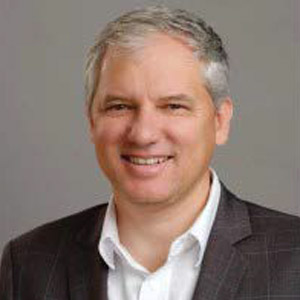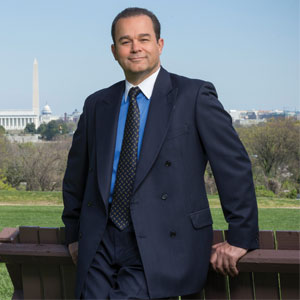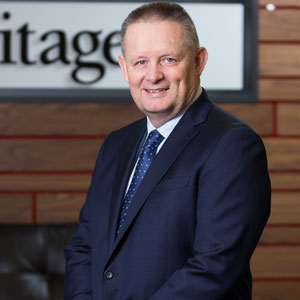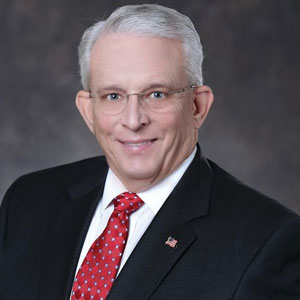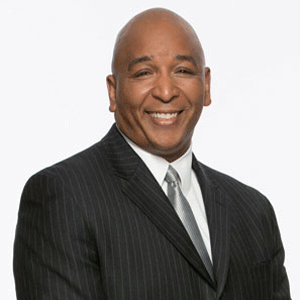THANK YOU FOR SUBSCRIBING

Designing Future-Ready, People-Centered Workplaces
Peter Andrew, Executive Director, Head of Workplace Strategy, Advisory Services, Asia Pacific, CBRE


Peter Andrew, Executive Director, Head of Workplace Strategy, Advisory Services, Asia Pacific, CBRE
Peter Andrew, Executive Director of Workplace Strategy at CBRE Asia Pacific, leads a team of over 100 workplace strategists and change managers in the region. With over 25 years of experience, he specializes in workplace strategy, change management, and design co-creation. Peter has led over 300 projects, advising senior leaders on creating more effective workplaces. He is a respected thought leader, known for his engaging communication and commitment to driving positive organizational change.
You won’t lose your job to AI, but you might lose it to someone who uses AI better than you
In an exclusive interview with APAC CIOoutlook, Andrew shared invaluable insights on how AI is reshaping workplace strategy, driving personalized design, transforming communication, and highlighting the need to balance technology adoption with human connection in the future of workspaces across Asia Pacific.
Reimagining Workplaces for a Digital WorldAs Executive Director at CBRE, I bring over 25 years of experience in workplace strategy and change management. Passionate about designing people-centered environments, I empower leaders across the Asia Pacific region to create inspiring, future-ready spaces that foster connection, productivity, and a sense of purpose.
I have combined my background in architecture with a deep focus on people and human-centered strategy to help organizations build workplaces that truly work for people. I lead CBRE’s Workplace Strategy Centre of Excellence in Asia Pacific, supporting colleagues operating across 11 countries and 14 cities, including India, China, and Japan. Together, we align physical work environments with strategic business objectives, designing spaces that elevate performance, well-being, and company culture.
Our work supports every phase of the workplace transformation journey, from high-level strategy to design translation and change management. At CBRE, we aim to deliver more than just beautiful offices. Our mission is to align physical spaces with strategic business goals, enabling clients to enhance employee performance, engagement, and organizational culture.
On a day-to-day basis, I am often involved in key project phases, whether that’s advising C-suite leaders on their concerns about workplace transitions or ensuring design and implementation teams stay aligned with the projects strategic vision. It’s a role that sits at the intersection of design, business, and behavior.
AI’s Expanding Role in Workplace StrategyArtificial intelligence (AI) is central to how the workplace is evolving. It's transforming the tools people use, and the way work gets done.
We are already witnessing a shift in workplace behaviors as more people spend time on video calls at their desks rather than connecting informally with colleagues. Digital assistants, powered by natural language interfaces are increasingly intuitive and accessible, further tethering employees to their screens. These changes raise new design challenges, such as more noise, higher cognitive load, and the need for spaces that support collaboration and deep focus.
At CBRE, we are actively applying AI to workplace strategy. Predictive modeling tools help clients anticipate workforce trends. We utilize AI image generators to assist clients in visualizing and communicating their design preferences, such as the desired ambiance for their reception or café area, thereby bridging the gap between client vision and architectural execution. Generative design tools accelerate the process of translating abstract ideas into visual plans.
Our smart building technologies also utilize AI and sensors to monitor air quality, lighting, and occupancy, generating real-time data that informs space optimization and long-term planning for the workplace. These connected systems enable us to design environments that are adaptive, responsive, and informed by how people utilize space.
Looking ahead, I envision a personalized AI-powered communication platform—an internal “social feed” that evolves with each employee, delivering relevant workplace change updates and allowing for two-way interaction. This would significantly enhance employee engagement, particularly during periods of organizational transition.
People-Powered Progress in the Age of AIWhile I remain optimistic about AI’s potential, I also reflect deeply on its broader societal implications. Since speaking publicly about AI in 2014, I have raised concerns about the pace of technological advancement and the growing power held by those who control these tools.
One major concern is the disruption of traditional career development models. In fields like consulting, many entry-level roles are being automated, reducing the opportunities for young professionals to learn through mentorship, observation, and hands-on experience. Clients increasingly demand immediate value, leaving little room for on-the-job learning.
At CBRE, we are rethinking how to equip junior team members with the meaningful skills they need in an AIenabled workplace. We are exploring new models of professional growth, ones that focus on helping individuals become AI “power users.” These are not coders or engineers, but professionals who apply AI tools creatively, ethically, and effectively to deliver better outcomes.
You won’t lose your job to AI, but you might lose it to someone who uses AI better than you. As AI fluency becomes a core expectation in knowledge-based industries, mastering these tools will be critical to staying competitive.
Human Skills in a Tech-Driven EraDespite AI’s transformative power, certain human capabilities, such as empathy, ethical judgment, and storytelling, continue to be essential. These are traits that machines struggle to replicate, yet they are indispensable in complex industries like real estate, where trust, emotional intelligence, and context matter deeply. When guiding organizations through change, leaders must do more than interpret data—they must also inspire, empathize, and communicate a clear and compelling vision.
That’s why I emphasize the importance of balancing technical fluency with emotional insight. As AI becomes more integrated into daily workflows, the ability to humanize transformation will define effective leadership.
My advice to young professionals is to develop a strong command of emerging technologies and the emotional intelligence to connect with others meaningfully. The future belongs to those who understand the tools and the people they serve.
At CBRE, we aim to build that future by blending design, behavior, and technology in ways that help organizations thrive. Our approach to workplace strategy doesn’t just prepare companies for the future of work but supports a future where people and technology progress together, harmoniously and purposefully.


